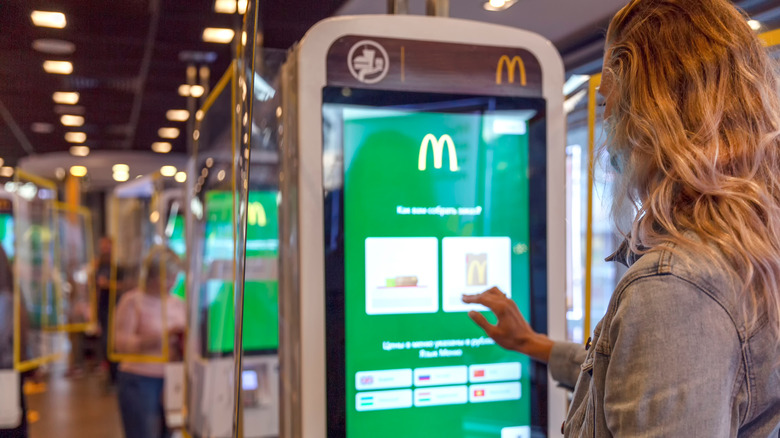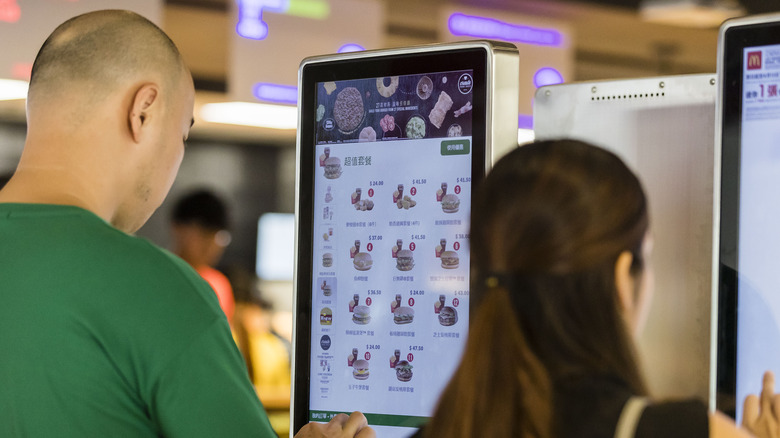The Truth About Self-Serve Kiosks At Fast Food Restaurants
As they become more efficient and user-friendly, self-serve kiosks are transforming the fast-food customer experience. Many of us have seen this firsthand. After all, who hasn't taken some secret pleasure in flicking through a digital menu? However, as FoodTec discussed in a 2018 article, self-serve technology is not only making fast food service more efficient, but also subtly changing customer behavior. Namely, it is encouraging people to spend more.
The numbers speak for themselves. FoodTec has suggested that self-serve kiosks increase customer spending, on average, by 20%, and this figure is borne out by data presented in a 2015 Harvard Business Review article. According to the review, major chains, including Taco Bell, McDonald's, and Chilis have all reported self-serve kiosks generating larger sales than in-person ordering, usually by a margin of 20%. In one instance, McDonald's even saw sales increase by as much as 30%. Self-serve kiosks aren't just good for business — they're great for business.
If the reported sales growth hasn't convinced you, look no further than the behavior of the fast-food chains themselves. As reported by Business Insider, starting in 2018 McDonald's was adding kiosks to 1,000 stores every quarter. If they haven't already achieved franchise-wide self-service, they are well on their way.
Service with a smile
How do self-serve kiosks promote greater customer spending? The answer is both more complicated and more straightforward than might have been expected. On the one hand, standard industry practices such as "upselling" (promoting premium goods, add-ons, and customization) are programmed right into the machines. Human cashiers may neglect to upsell, but self-serve kiosks can't help but do so (via FoodTec). Given the visual nature of self-serve kiosks, upselling can be cleverly woven into the menu itself, and more easily escape customer notice.
On the less intuitive side of things, though, kiosks have been shown to positively impact customers' moods, making them happier and priming them for greater spending. In a 2017 study published in the Journal of Retailing and Consumer Services, researchers demonstrated that touch screens create "experiential and effective feelings" in customers — and, moreover, a greater sense of privacy. In short, customers are happier and more self-assured when using self-serve kiosks, and are therefore more likely to spend more.
Using a self-service kiosk can be a joyful experience, but one that comes at a cost if you're not careful. Bear that in mind next time you're given the choice between self-service and regular. Your wallet will thank you.

